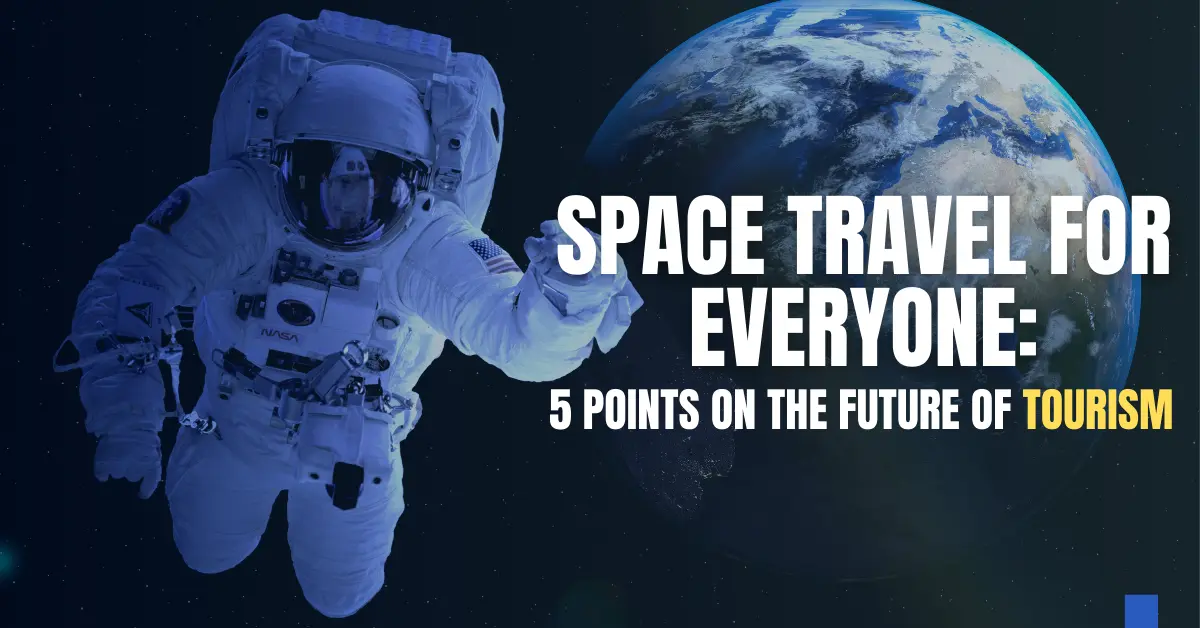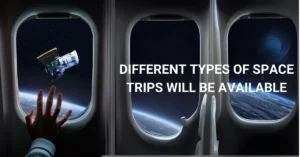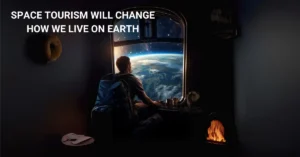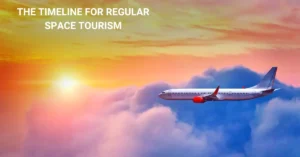
Space Travel for Everyone: 5 Points on The Future of Tourism
- 46
- 0
- 0
Space travel for everyone is a futuristic concept where space exploration becomes accessible to the general public, not just astronauts. With rapid advancements in technology, private companies are making space tourism a reality. Imagine travelling beyond Earth’s atmosphere to experience zero gravity, view Earth from space, and explore new frontiers. This new era of tourism could redefine travel, offering once-in-a-lifetime experiences and potentially opening doors to long-term space settlements. As technology advances and prices lower, space travel could become as common as international flights, offering thrilling and transformative journeys beyond our planet’s limits.
Space Travel for Everyone: 5 Points on The Future of Tourism
The idea of travelling to space isn’t just for astronauts anymore. As technology advances and private companies join the space race, regular people might soon get their chance to see Earth from above. Let’s look at five important points about the future of space tourism and what it means for everyone.
Getting to Space Is Becoming More Affordable

Space travel used to cost billions of dollars and was only possible through government space programs. Today, private companies are changing this reality. Companies like SpaceX, Blue Origin, and Virgin Galactic are creating new spacecraft and launch systems that cut costs significantly.
While a space trip still costs hundreds of thousands of dollars, prices are dropping. Ten years ago, a trip to space would have cost over $20 million. Now, some companies offer short space flights for about $250,000. Experts think these prices will keep going down as technology improves and more companies start offering space flights.
Many companies are also working on payment plans and financing options. Just like how people can buy cars or houses with monthly payments, future space travellers might be able to pay for their trips over time. This could make space tourism possible for middle-class people within the next 20-30 years.
Different Types of Space Trips Will Be Available

Space tourism won’t be one-size-fits-all. Companies are planning various types of space trips to match different budgets and interests:
Suborbital Flights: These are short trips that go up to the edge of space and come right back down. The whole journey takes about 15 minutes, with passengers feeling weightless for 3-4 minutes. These will be the most affordable option.
Orbital Stays: These trips will take people into orbit around Earth. Passengers will stay in space hotels for several days, floating in zero gravity and watching Earth spin below them. Companies are already building the first space hotels, with plans to open them in the next decade.
Moon Visits: Some companies are planning trips around the Moon. While these will be very expensive at first, they’ll give people the chance to see what astronauts saw during the Apollo missions.
Mars Tourism: Though still far off, companies like SpaceX are already planning how to take tourists to Mars. These trips might become possible in the 2040s or 2050s.
Safety Is Getting Better

Space travel has risks, but companies are working hard to make it safer. New spacecraft have multiple safety systems and emergency procedures. Here’s what’s improving:
Launch safety has gotten much better. Modern rockets can detect problems early and either fix them or safely abort the launch. The spacecraft themselves have emergency escape systems that can quickly move passengers away from danger.
Medical screening is also improving. While early space tourists needed to be in perfect health, new technology and better spacecraft design meant that more people could safely go to space. Companies are developing special training programs that take just a few days instead of the months or years that astronauts need.
Space suits and life support systems are becoming more reliable and comfortable. New designs make it easier for regular people to use them without extensive training.
Space Tourism Will Change How We Live on Earth

Space tourism isn’t just about fun trips – it will change life here on Earth in many ways:
New technologies made for space tourism will help everyone. Things like better air filtration, water recycling, and solar power systems will be useful on Earth too. Just like NASA’s space program gave us things like memory foam and cordless tools, space tourism will create new inventions we can all use.
Space tourism will create many new jobs. We’ll need pilots, engineers, doctors, teachers, and hotel staff who know how to work in space. This could help the economy and give people exciting new career options.
Seeing Earth from space often changes how people think about our planet. Astronauts call this the “overview effect” – when you see Earth as one connected world without borders. As more people go to space, this might help us work together better to solve global problems.
The Timeline for Regular Space Tourism

Here’s what we might hope in the future years:
By 2025-2030: Regular suborbital flights will become common. Several companies will offer these trips, and prices will start to drop as competition increases.
By 2030-2035: The first space hotels will open. These will be small at first, holding 10-15 people, but will grow larger over time. Stays will probably last 3-7 days.
By 2035-2040: Moon trips will become regular, though still very expensive. The first Mars practice missions with tourists might begin.
By 2040-2050: Space tourism could become common enough that middle-class people might be able to save up for a trip, as they do now for expensive vacations.
What This Means for You
Even if you’re not planning to go to space soon, space tourism will affect your life. The technology it creates will make things better here on Earth. It might help us solve problems like pollution and energy use. It will create new jobs and might even help countries work together better.
For now, you can follow the progress of space tourism companies online. Many offer virtual tours and simulations. Some companies even let people buy reservations for future flights, often with flexible payment plans.
Remember that space tourism is still new, and things might happen faster or slower than expected. But one thing is clear – space won’t just be for astronauts much longer. Regular people will have their chance to see Earth from above, float in zero gravity, and be part of humanity’s next big adventure.
The future of space travel looks bright, and it’s getting closer every day. While we wait for prices to come down and technology to improve, we can start learning about space and planning for the day when a trip to orbit is as common as flying in an aeroplane is today.
FAQs
What is space travel for everyone?
Space travel for everyone means making space exploration accessible to ordinary people, not just astronauts. With advancements in technology, space tourism is becoming possible for those who can afford the experience.
How can people travel to space?
People can travel to space through commercial space tourism companies. They offer suborbital flights, giving passengers the chance to experience weightlessness and see Earth from space for a short period.
Will space travel become affordable?
As technology improves and competition grows, the cost of space travel will decrease. In the future, it may become more affordable, allowing more people to experience space tourism, much like air travel today.
What can passengers do during a space trip?
Passengers on space trips can experience zero gravity, view Earth from space, and enjoy unique experiences like spacewalks or onboard activities, depending on the mission. Each trip offers a once-in-a-lifetime adventure.
How will space tourism impact Earth?
Space tourism could benefit Earth by advancing technology, creating new industries, and promoting environmental awareness. However, it also raises concerns about sustainability, space debris, and the environmental impact of rocket launches.
Also Read:
5 Best Eco-Friendly Travel Gear for 2025
References:
https://en.wikipedia.org/wiki/Space_tourism
https://en.wikipedia.org/wiki/Future_of_space_exploration
Disclaimer:
Space travel is still in the development phase and may involve risks. The future of space tourism is subject to technological advancements, regulations, and safety measures. Availability, pricing, and accessibility may change as the industry evolves.
